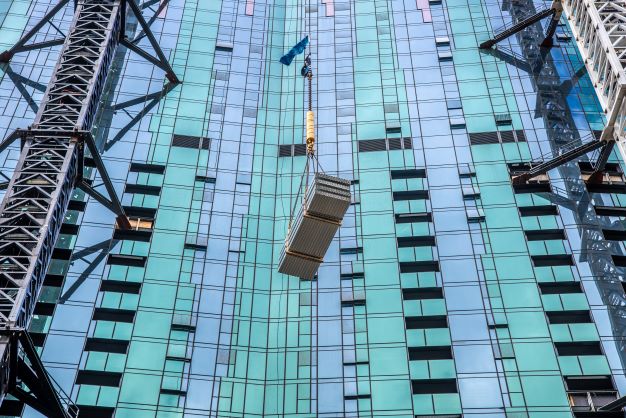02 Nov Engineers responsibility towards consequential damage
Engineering is the foundation of all built environment over history and the built environment is reliant on strong and stable foundations. It is therefore important that when design of a structure begins, significant consideration needs to be paid to the surrounding environment and buildings.

There has been significant discussion around building quality and design and construction failures impacting the ability for owners and tenants to enjoy their homes and buildings. The role of the professional engineer in driving improvement cannot be overstated. This can be achieved by collaboration of all design and construction disciplines through the entire process. The Building Confidence Report authored by Peter Shergold and Bronwyn Weir set out clear guidance in the recommendations, with the Australian Building Codes Board (ABCB) Building Confidence Report Implementation Team working with industry to provide guidance on implementation. It is therefore timely for everyone involved in the engineering and construction of buildings to consider their individual role in the process and take time to revisit these recommendations and the work of the ABCB.
‘…significant consideration needs to be paid to the surrounding environment and buildings.’
Another key aspect which needs to be considered to ensure owners and tenants are able to enjoy the amenity of their homes relates to protecting adjacent structures.
The Queensland Building and Construction Commission Act 1991 Part 6 deals with ‘consequential damage’ and states consequential damage is damage –
- caused by, or as a consequence of, carrying out building work at a building site (the relevant site) , regardless of any intention, negligence or recklessness of the person carry out the work; and
- to a residential property at the relevant site, containing the relevant site or adjacent to the relevant site
The legislation of what is damage to a residential property is further described in 71H(2), but in summary can be described as any damage or impairment to a residential building including the fencing, retaining walls, termite barriers, plumbing, building structure, walls, swimming pools, driveway or pathway.
Whilst the designer is not in legislation responsible for the actual consequential damage, the first line of prevention is through consideration of the design of excavation and foundations type and structural load of the building on the zone of influence. Additionally, consideration of possible redundant pipes along with tidal and overland water flow and communication to the relevant stakeholders will serve to prevent damage to adjacent buildings, the need to change design during the process of construction.
‘…the first line of prevention is through consideration of the design of excavation and foundations type and structural load of the building…’
To further highlight the requirement to consider the need to give focus to surrounding buildings, the National Construction Code (NCC) in Part BI Structural Provisions states in objective B01 the need to ‘safeguard people from loss of amenity caused by structural behaviours and protect other property from physical damage caused by structural failure’.
The NCC further states ‘loss of amenity’ as being ‘the loss of a person’s ability to use a building in the manner intended’ which includes as an example ‘building doors to stick, and thus detract from a person’s ability to move about the building’.
It is noted consideration is not given to the state of the building or the building design under which the building adjacent was constructed. Therefore consideration that the engineering of the building under construction needs to take into account the need to prevent any impact on the adjacent building is a requirement of the professional engineering design process.
It is equally and importantly the responsibility of builders and clients to ensure that the guidance and design of the professional engineer is followed; without this collaboration and team work, the process will possibly fail. Short cuts and substitution without full consideration, analysis and agreement by all members of the construction and design process will ultimately lead to a lesser product and impact on the built product.
Government legislation can provide all the enablers, gauges and regulatory oversight; however it is the commitment of individuals engaged in the building and construction industry which will drive change to ensure better quality and compliance. Every movement starts with one, then two then from there others will join. It is your state, your country and your commitment and the right individual actions which will ensure a change for the better and enjoyment of working in the industry.
‘…without this collaboration and team work, the process will possibly fail.’
YVONNE PENGILLY
Building and construction industry representative
BTech (Civil Engineering), QBCC Open Builders Licence, GAICD
Yvonne Pengilly is the building and construction industry representative, appointed in July 2016. Ms Pengilly is a licensed open builder. Her career began in subcontract brick and blockwork before moving into management and leadership roles overseeing construction of highend resort and multi-storey apartment developments.

 MY ACCOUNT
MY ACCOUNT
